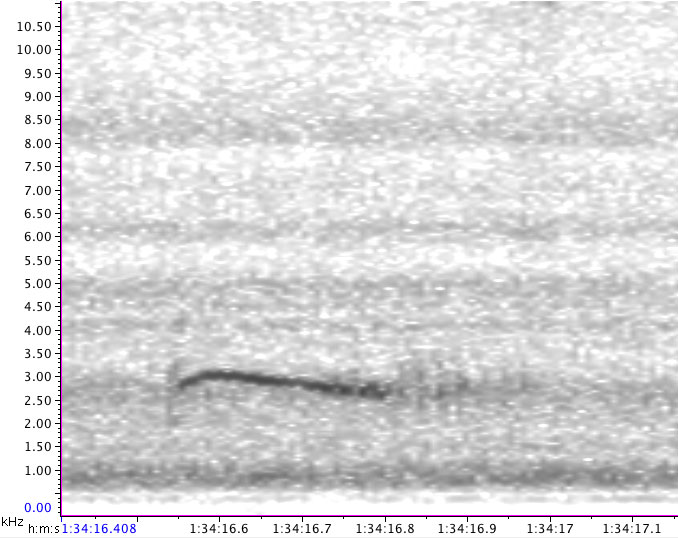Intro to Nocturnal Flight Calls
5/14/17
By David Brown
I listen to birds at night. You may think I am referring to owls and whippoorwills, but over the past few weeks I have made audio recordings of everything from savannah sparrows and yellow-billed cuckoos to green herons and killdeer flying over my house in Montoursville.
Large numbers of birds migrate at night and they regularly vocalize. These flight calls probably help birds maintain contact and spacing within migrating flocks. These calls can be heard from the ground and many can be identified to a specific species.
Many nocturnal flight calls are short high-pitched peeps and buzzes. Thrush calls are generally in the 2 to 6 kHz range. Sparrow and warbler calls are usually between 6 and 10 kHz. Other species like cuckoos and herons have distinctive low calls.
One of the easiest nocturnal flight calls to identify is that of the Swainson's thrush which sounds very similar to a spring peeper. This species can be difficult to find during the day but dozens or even hundreds can be heard migrating on a good night.
Though some species have distinctive nocturnal flight calls that can be distinguished by ear alone, many are best identified by viewing a visual representation of the sound called a spectrogram. By creating a spectrogram you can see the exact shape of the sound as well as measure the exact frequency and length. This helps differentiate between species that sound similar.
To create a spectrogram you need a recording of the call. The best microphone to use is one that can be pointed up to cover a fairly large portion of the sky without picking up too much terrestrial noise. A parabolic dish would not be good because that would only capture the sounds from a very small area. Weatherproof nocturnal flight call microphones for permanent installation are available online for a few hundred dollars. Alternatively you can build your own. The audio can be recorded directly to a computer or to a digital recorder. A low-cut filter can help remove the rumble of traffic and other noises.
I use free software from the Cornell Lab of Ornithology called RavenLite to quickly look through a recording for calls and create spectrograms. Software is also available that will automatically process an audio file and attempt to pick out all the bird calls.

Spectrogram - Veery NFC
Birds tend to migrate when there are favorable tailwinds. If you look at a weather radar map at night you will see circles around each radar site. This is not precipitation but rather migrating birds, so the intensity can indicate whether you can expect to hear a lot of calls or not.
Migrating at night can also be hazardous for birds. In particular bright lights can confuse them and cause them to crash into buildings or circle until exhaustion This was in the news recently when hundreds of birds were killed in one night at a building in Galveston, Texas. The National Audubon Society runs an initiative called “Lights Out” to draw attention to this problem.
The next time you are outside on a quiet night listen for the calls of migrating birds.
View the LycoBirds Guide to Recording Nocturnal Flight Calls